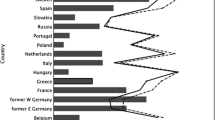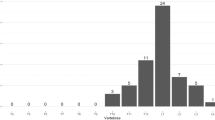Abstract:
Various morphometric criteria have been used to define incident vertebral deformity. The aim of this analysis was to compare the relative validity of two established criteria and a novel method in which these criteria were combined. Men and women aged 50 years and over were recruited from population registers across Europe and had lateral spinal radiographs performed using a standard protocol. A subsample of individuals had bone mineral density (BMD) at the spine or femoral neck. Subjects were followed prospectively and a subsample had repeat spinal radiographs a median of 3.8 years after the baseline survey. All radiographs were evaluated morphometrically in the radiology coordinating center in Berlin. Anterior, middle and posterior height were recorded in all vertebrae from T4 to L4. On the basis of these morphometric measurements incident vertebral deformity was defined using one of three methods: (i) the change method – a change in any vertebral height of 20% or more between films, plus the additional requirement that a vertebral body have changed in absolute vertebral height by 4 mm or more; (ii) the point prevalence method, where a vertebra satisfies criteria for a prevalent deformity (McCloskey–Kanis) on the follow-up, though not the baseline film; (iii) a combination of the height reduction and the point prevalence criteria. Paired films were also evaluated qualitatively by an experienced radiologist for the presence of incident vertebral deformity. Logistic regression was used to compare the three morphometric methods using known risk factors for vertebral deformity including age, baseline vertebral deformity and BMD, and the qualitative evaluation. Computer simulation was used to determine the potential degree of bias and loss of statistical efficiency due to misclassification for each of the three methods, using the radiologist’s assessment of incident deformity as the reference. Six thousand eight hundred subjects were included in this analysis. Of these 450 had sustained an incident vertebral deformity according to at least one of the three morphometric methods. The distribution of risk factors was similar in the subjects who satisfied only one morphometric criterion and those who satisfied neither. However, the subjects who satisfied both criteria had a very different distribution of risk factors: they were older, more likely to be female, more likely to have had a previous vertebral deformity and more likely to have an incident fracture in the opinion of an experienced radiologist. Using computer simulation, at low incidence levels, combining the criteria led to greater statistical efficiency and less bias in estimating associations with risk factors. Thus in this analysis the combination of the point prevalence and 20% change in height criterion for defining incident vertebral deformity showed a stronger relationship with clinical risk factors than either single criterion. Its application in population-based studies would increase the likelihood of detecting risk factors for incident vertebral deformity for a given sample size.
Similar content being viewed by others
Author information
Authors and Affiliations
Additional information
Received: 6 November 2001 / Accepted: 7 May 2002
Rights and permissions
About this article
Cite this article
Lunt, M., Ismail, A., Felsenberg, D. et al. Defining Incident Vertebral Deformities in Population Studies: A Comparison of Morphometric Criteria . Osteoporos Int 13, 809–815 (2002). https://doi.org/10.1007/s001980200112
Issue Date:
DOI: https://doi.org/10.1007/s001980200112




